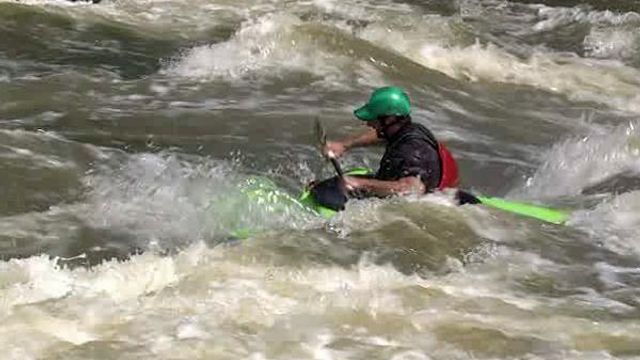Opinions vary over management of Falls Lake
Falls Lake is more than the primary source of drinking water for Raleigh and several Wake County towns, it is also a popular recreation area. However, some people believe the way the Army Corps of Engineers regulates the water creates usage problems.
Posted — Updated“Falls Lake is a multi-purpose lake. So, there is some juggling,” Assistant Army Corps Of Engineers Project Manager for Falls Lake Carol Banaitis said Monday.
Banaitis said she has become accustomed to second guessing over the lake's water levels, too low for boaters or not enough water for downstream communities, or not enough water stored for another drought.
Some people who frequent Falls Lake recreational swimming areas also have concerns.
Beaverdam and Sandling beaches were off limits last week to swimmers because of elevated levels of bacteria in the water. Wake County Environmental Services temporarily closed the beaches after routine tests showed elevated levels of enterococci, bacteria which can cause infections and lead to diarrhea.
Swimmer Aliceyn Mead said she wonders if holding back water after storms contributes to bacteria-based beach closings.
“We've been here three and a half years and every year they have problems with this lake. So, I really believe letting out dams would help,” she said.
Banaitis said bacteria and water levels are likely not related.
“The lake is not stagnant. It is a really large lake. There is a lot of wind and wave action going on. I don't see how that could be a factor,” she said.
Dr. Bill Hunt, assistant professor and extension specialist at North Carolina State University's Department of Biological and Agricultural Engineering and head of the department's stormwater engineering team, said recreation must take a back seat to ensuring that Falls Lake, which currently stands about 3 feet above its target level, provides enough drinking water and maintains capacity in the case of a tropical storm or drought.
“The reason these things were built initially were for flood control and drought control. You always have to remember that,” Hunt explained.
• Credits
Copyright 2024 by Capitol Broadcasting Company. All rights reserved. This material may not be published, broadcast, rewritten or redistributed.





